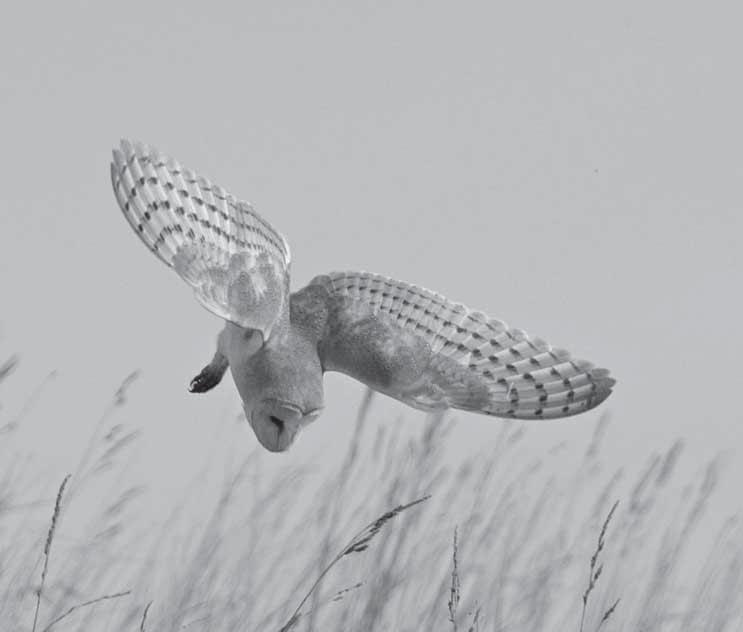
3 minute read
Suffolk BINS –Spring –county rarities report ....................Roy Marsh
–Before you start to manipulate an image save as a TIFF (unless you intend emailing the results –in which case make a JPEG) –Lightening the image by using the brightness and contrast scales –Sharpening the image –Cropping extraneous material out
Glossary
Adaptor –mechanism for attaching camera to scope.
Aperture –more commonly referred to as the ‘f number’ that represents the amount of light a lens is admitting for a shot.
Cropping –a computer-based technique to remove sections of the background around an image.
Digital Compact –a digital compact camera.
DSLR –digital single lens reflex camera.
ISO –or film speed (based on an international system of standards known as ISO) or ASA (the American equivalent) determines how sensitive the silver halide emulsion of film is to light (appears as whiteness), increasing in sensitivity by a factor of 2 when the value doubles or is advanced one stop, i.e., 100-200, 200-400, 400-800, etc. The same scale is now used to describe the sensitivity of digital camera sensors.
Noise – the “grainy” effect caused by using higher ISO’s.
Objective lens – the size of the large lens on your scope, usually 65-80mm in diameter.
Shutter Speed –defined as the length of time that the camera shutter remains open as the picture is taken, usually between 4 seconds –1/4000th second.
Vignetting –a black soft-edged border around an image –zooming-in usually removes this effect.
Bill Baston puts the case for conventional photography
People have been achieving impressive results through digiscoping for some years now, and it does offer a serious alternative for photographing birds. For digiscoping has made it possible for more birders to have their own personal photo collections of birds – be they rare or common. This couldn’t otherwise be done without spending a lot more money and carrying many more kilos of equipment in the field.
While I have no personal experience of digiscoping and am not qualified to comment on the equipment or techniques involved, I can make a couple of points. The main drawbacks that I have seen, or been told about, appear to be: –Once set up, the digiscoping rig is less manoeuvrable for flight shots or other action images; it can be done to some extent, but it is more difficult. –A high-end DSLR camera also offers a vast array of features that you don’t get with a compact digital camera. These include fast autofocus, up to 10 frames per second, superior sensor quality, custom functions, etc. –The lens quality and light-gathering ability of the digiscoping set-up are not as good as the big telephoto lenses – as you would expect given the price difference between the two systems!
But it’s not all one-way traffic. One great advantage of digiscoping, which the big-lens snappers envy, is the higher magnifications that are available, allowing the digiscopers to get good-sized images of more distant or smaller birds, which are sometimes beyond the reach of even the longest telephoto lenses.
Constant advances in technology and improvements in optics and digital cameras
Barn Owl stoop –flight shots such as this are more easily executed
will probably allow the digiscopers to gain more ground on the conventional photographers, whose heavy glassware hasn’t changed that much compared with the huge and rapid advances in digital technology.
As things stand, the best results still come from conventional photography, but, as they say, watch this space!
Digiscoping and conventional photography –a conclusion
We can now see that as both techniques have benefits and drawbacks they are not necessarily competitive. In fact it might be argued that the two approaches actually complement each other. Digiscoping seems to provide a good introduction to wildlife photography when dealing with relatively static subjects. It also provides birders with a relatively inexpensive opportunity to produce personal images, especially important when confirming sightings of scarce or rare birds. High-end photography comes to the fore because it can provide good quality images, such as superb action shots in less favourable light conditions. Each technique demands considerable skill, judgement and practice to perfect and can provide very satisfying, although differing results.
So, what should we conclude? Well, it’s the old dictum, ‘you pays your money and you takes your choice!’









